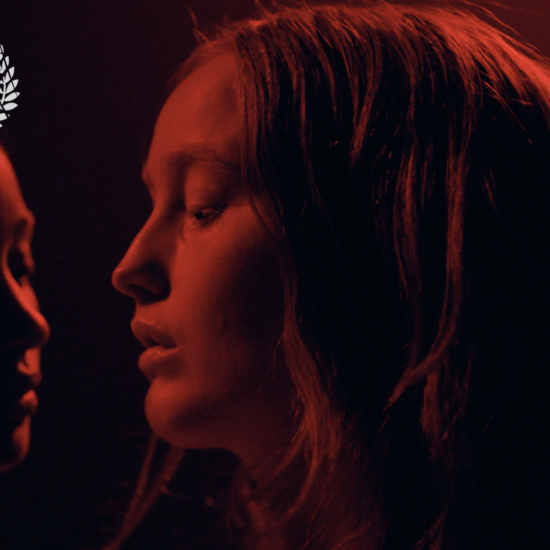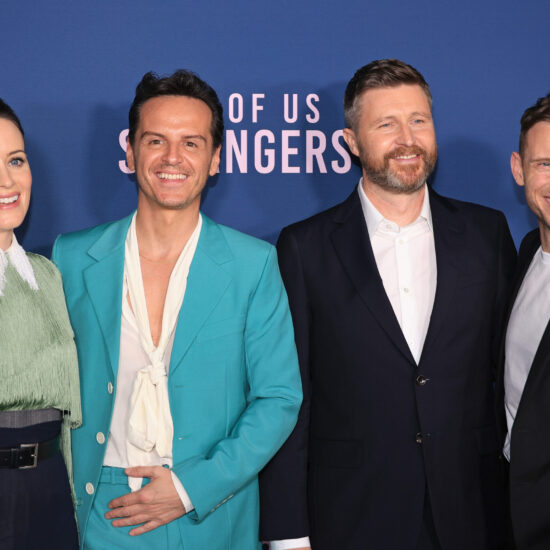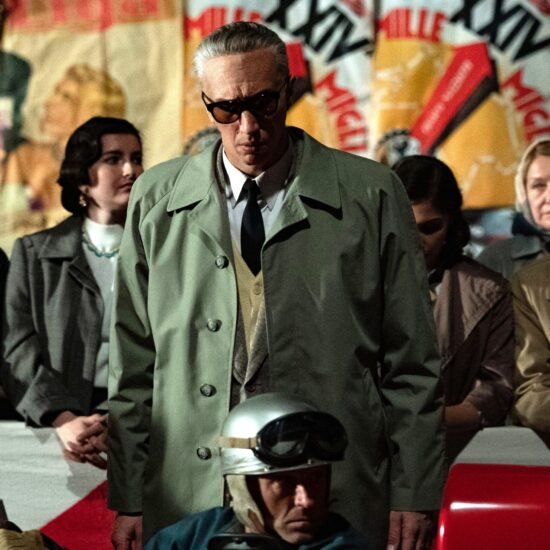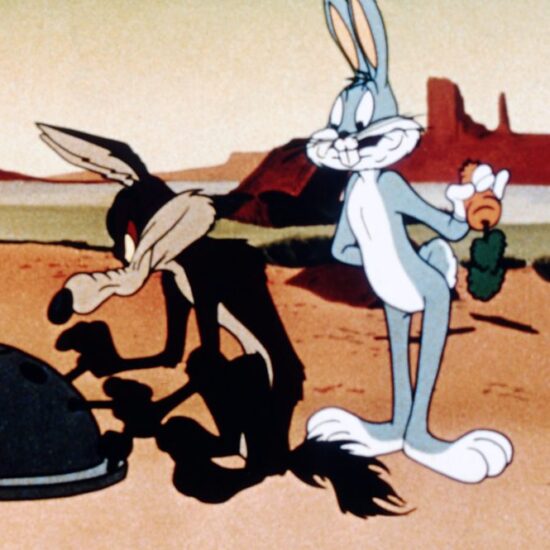
On Friday nights, IndieWire After Dark takes a feature-length beat to honor fringe cinema in the streaming age.
First, the spoiler-free pitch for one editor’s midnight movie pick — something weird and wonderful from any age of film that deserves our memorializing.
Then, the spoiler-filled aftermath as experienced by the unwitting editor attacked by this week’s recommendation.
The Pitch: This Is What You Get When Alpaca Etiquette Is Ignored
Every time I watch “Color Out of Space” I remember to celebrate the fact that none of my current responsibilities involve caring for alpacas (for either domestic or commercial purposes). Despite the off-brand llamas’ unofficial status as the Rolls Royce of even-toed ungulate mammals, Richard Stanley’s 2019 horror film makes raising them seem like an inconvenience that rivals the appearance of indescribable cosmic evils. Who on Earth has the time to examine unpasteurized alpaca milk for the presence of fennel? While the bulk of Nathan Gardner’s (Nicolas Cage) problems in “Color Out of Space” stem from the fact that an asteroid crashed in his yard and possessed his family with the pink essence of evil, it’s fair to wonder whether he would have handled things better without the constant thorn in his side provided by his beloved alpacas.

“Color Out of Space” fits squarely within the much-publicized Cage renaissance that saw the actor lend his talents to some of the weirdest indie films of the past half-decade. From the arthouse horror of “Mandy” and the comic book camp of “Willy’s Wonderland” to the meta humor of “The Unbearable Weight of Massive Talent,” Cage forged a legendary second act by being one of the only movie stars willing to take chances on oddball projects. An adaptation of an H.P. Lovecraft story — an author so unfilmable that even Guillermo del Toro has struggled to bring his work to the screen — directed by a filmmaker who had avoided the spotlight since being fired from “The Island of Dr. Moreau” certainly fits the bill.
Like so many Lovecraft stories, “Color Out of Space” deals in the idea that the cosmos are filled with profound evils that our feeble human minds can’t possibly visualize or understand. That often makes it impossible to adapt his work for the screen, because to make an artistic rendering of his creatures is to miss his point entirely. But “Color Out of Space” is Lovecraft on easy mode, as the story takes place on Earth and largely consists of a recognizable human family who is as confused as we are about their cosmic foes. The film centers on the Gardners, a reasonably close household that decides to abandon city life to live on their late grandfather’s farm — only to find their lives upended when a glowing pink asteroid begins to work its way into their water supply and alter their personalities beyond recognition.

“Color Out of Space” contains its fair share of Cage-y moments, including one of the wildest cinematic uses of heirloom tomatoes in recent memory. But unlike many of Cage’s recent midnight movies, the film never makes you feel like its existence is just an excuse for him to chew scenery. His performance is quite restrained at first — even if it occasionally sounds like his suburban dad schtick is the worst Donald Trump impression of all time. In an ocean of wild Cage characters, “Color Out of Space” stands out because he’s simply playing a guy that the weird stuff happens to.
Which isn’t to say that the film is lacking in the “midnight movie glory” department. From the trippy neon visuals to the presence of Tommy Chong as a hippie squatter named Ezra, “Color Out of Space” checks plenty of counterculture boxes. Even if it’s destined to live on as one of Cage’s minor cinematic experiments, it’s a fascinating look at the ways that filmmakers can represent complicated ideas that are theoretically impossible to visualize. Just as Lovecraft intended, it’s the kind of film that sticks in your bones as a reminder that truly indescribable terror might be waiting for us in the next life — and that you should never adopt an alpaca without a proper understanding of the labor that it entails. —CZ
The Aftermath: Can Someone Please Get the Dog Off of Me?
Watching “Color Out of Space” with my dog sleeping on my legs and my cat playing with my hair, the corduroy couch anchoring my living room suddenly took on a gelatinous feel. “A dream you dream alone is a dream,” Nathan said to his wife. “A dream you dream together is a reality.” Let’s hope my pets and I don’t share nightmares.
It’s borderline annoying to reduce horror movies to metaphors for generational trauma, existential dread, and/or existential dread exorcised via generational trauma. But this magenta-washed misadventure in community-based Cronenberg-ing isn’t so much booping those themes on the nose as it is staring them down over a shotgun barrel. The idea that we’re all connected is at once comforting and horrifying. Neighborly assistance and familial support are one thing; you scratch my nine-headed alpaca, I’ll scratch yours. But sharing the wrath of our innermost demons is a consequence of that closeness.
Lavinia (Madeleine Arthur) pleading, “Daddy, you’re hurting me,” only to have Nathan reply, “Honey, I’m not that. No, I’m not a monster. I know I’m not my dad” — while actively yanking his daughter up the stairs by her hair — packed just as much of a punch as the revelation that Theresa (Joely Richardson*) and Jack (Julian Hilliard) had been contorted into a literal, biological interpretation of Paul Simon’s “Mother and Child Reunion” via fallen star.
(*It’s worth noting that Richardson also starred in “Event Horizon,” another epic Lovecraftian horror show that just so happened to be last week’s IndieWire After Dark pick. Our compliments to the hellishly committed scream queen; long may she mutate.)

Brillianty structured, “Color Out of Space” uses its first act to establish individual universes for each of its main characters: Nathan has his farm; Theresa has her work; Benny (Brendan Meyer) has his weed; Lavinia has her faith; and Jack has the innocence of childhood. Simultaneously, we learn about their shared struggles: ubiquitous emotions like insecurity, anxiousness, and grief. It’s only when these five family members’ self-protecting worlds begin to bleed together — first as combative psychological swipes between relatives à la “Hereditary” and then as literal, glowing connective tissue — that the horror of being one with humanity comes to bear.
Just as it unfolded for the Gardners (kind of a biblical last name, don’t you think?), the pink asteroid of life just happens to each of us, coming out of no place or time we can describe. One day, you’re shrouded in darkness. The next, you’re ripped from that darkness and taught to fear it. Where did I come from? Where am I going? The terror of those two questions, really one, is what underpins nearly everything that scares genre fans and people writ large. Watching Michael Myers chase Laurie Strode around with a butcher knife, we’re aware that getting stabbed would “hurt,” yes. But even the biggest scaredy cat can appreciate that pain is temporary if you survive it. Instead, it’s the question of what becomes of horror victims when the light leaves their eyes that really petrifies. Does the pain stop if you end with it?

What makes “Color Out of Space” uniquely terrifying isn’t that it understands or portrays our fear of death better than other movies. It’s that it elegantly commingles the unanswerable questions of death with the murderous mundanity of obliviously seeking peace in life. With no control over what came before us or what happens after we go, “try to be happy” is about as good of a coping mechanism as anyone can offer. Move to the sticks and grow tomatoes. Hug the kids and get that bonus. Smoke your joint and befriend the weird neighbor. Hell, read the Necronomicon, highlight your hair purple, and hit on the hot hydrologist. You just can’t let yourself think for a second that those earthly actions will save you from the pitch-black truth that, at least as Lovecraft saw it, we know nothing.
Countless horror films have mined similar scares from depictions of loneliness. But we in the midnight movie space choose to find refuge in facing our fears together. So, as you process this spectacular film (a freaking fantastic pick, Zilko!), don’t be afraid to cuddle your loved ones close and live in the moment. To see “Color Out of Space” as a happy movie about cosmic evolution is only a matter of perspective. We assume there’s suffering when the edges of one thing’s existence become irrevocably entangled in that of another. But we can’t ever — and won’t ever — know for certain. What’s worse: dying an unassimilated Nathan shot dead on your front porch? Or living as whatever became of the fuschia-infused Lavinia? No one can say. But dog, cat, or writer, all things cry when they’re born. —AF
Those brave enough to join in on the fun can stream “Color Out of Space” on Shudder. IndieWire After Dark publishes midnight movie recommendations at 11:59 p.m. ET every Friday. Read more of our deranged suggestions…
















